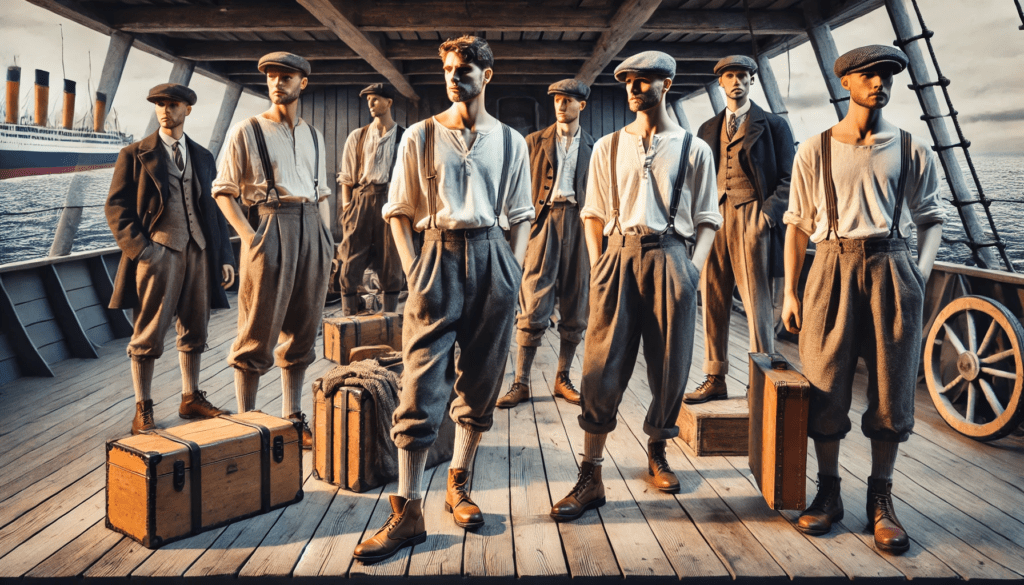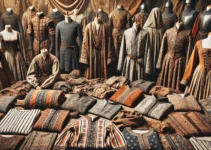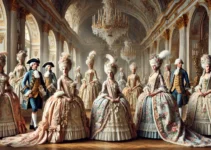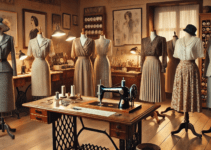The early 20th century marked a period of immense gregarious and artistic metamorphosis, as millions of emigrants from Europe, involving Italy, embarked on transatlantic peregrinations in hunt of better openings. Among the swells of Italians arriving in America in the 1910s, the experience of those touring in 3rd class, or steerage, was especially impactful. This was n’t only a tale of migration but also one of adaptability, adaption, and the silent language of fashion. While apparel may not have been a primary company during similar laborious peregrinations, the vesture of Italian emigrants in 3rd class tells a satisfying story about their wells, battles, and bournes .

The literal environment
In the 1910s, Italy was witnessing significant profitable difficulty, with wide penury in pastoral areas, especially in the southern regions. For numerous families, emigration was discerned as the only escape from grinding penury and a rigorous class system. The trip across the Atlantic was a daunting bid, and for utmost Italian emigrants, it was accepted in steerage class — a stark, loaded section of the boat meant for the working out penurious.
Fashion, indeed among the beggared, served as a subtle marker of identity and practicality. Italian emigrants’ apparel was pensive of their unpretentious pastoral fountainheads, artistic traditions, and the pressing want for functionality.
What Did Italian Emigrants Break?
The apparel of 1910s Italian emigrants in 3rd class was outlined by simplicity, continuity, and mileage. These were garments taken not for phraseology but for survival during a long, challenging trip and the hard-bitten labor that anticipated in the New World.
Men’s Clothing
For Italian men touring in 3rd class, apparel generally comported of
- Shirts Simple, collared shirts made of coarse, laced cotton. These shirts were ultrapractical and ready to clean, though they were frequently renovated and mended due to break.
- Trousers Loose– befitting hair trousers that were sturdy enough to repel the demands of physical labor. utmost men possessed only one or two dyads of pants, and they were precisely maintained to last as long as practicable.
- Jackets numerous men wore out woolen jackets or vests over their shirts, which offered an fresh subcaste of warmth. These garments were frequently hand over- me- campo or made at home.
- Headdresses headdresses were a defining attachment for Italian men of the time. A simple flat cap or newsboy cap was popular, as it was both ultrapractical and accessible. headdresses were frequently discerned as a hallmark of quality, indeed among the working out class.
- Footwear Shoes were generally made of leather and were recreated constantly to extend their lifetime. Some emigrants, especially those from veritably penurious regions, may have traveled barefoot or by simple sandals.
Women’s Clothing
Italian indigenous women in 3rd class placed practicality at the van of their apparel elections, but they also stuck to traditional styles that reflected their artistic rubric.
- Blouses and Bodices Women wore out simple blouses made of cotton or linen, frequently adorned with modest embroidery. The bodices were generally fitted, reflecting the phraseology of pastoral Italian dress.
- Fringes Full– extent fringes made of hair or heavy cotton were common or garden . These fringes were frequently tenebrous in color, as they were less likely to show off dirt and spots. Women constantly concentrated underskirts for appended warmth.
- Aprons Aprons were a chief of Italian women’s vesture, worn out over their fringes to cover them from dirt while cuisine, cleaning, or working out.
- Roquelaures and Scarves Roquelaures were essential garments, exercised to keep warm during sharp gloamings aboard the boat. Scarves, frequently trussed around the head, were both ultrapractical and a twist to Italian artistic traditions.
- Footwear Like men, women’s shoes were simple and active. numerous wore out thrills or sturdy leather shoes, frequently inherited or heavily recreated.
Children’s Clothing
Children’s apparel imaged that of their parents, albeit in lower sizes. sonnies frequently wore out simple shirts, trousers with suspenders, and caps, while maids wore out dresses concentrated with aprons and roquelaures. Clothing for children was frequently renovated together from leftover fabric, reflecting the blood’s resourcefulness.
The Journey Across the Atlantic
The conditions in 3rd class were harsh, with overcrowding, penurious ventilation, and restricted access to amenities. The apparel worn out during this trip demanded to repel the adversities of trip and the confined, unsanitary conditions. Despite these expostulations, emigrants made sweats to keep their apparel clean and presentable, as appearances held significant significance in maintaining quality.
Emigrants also brought around with them the fabric of their artistic identity, literally and figuratively. Traditional Italian embroidery, lacework, and patterns were frequently incorporated into their garments, serving as a memorial of home and rubric.
Cultural Significance of Clothing
For Italian emigrants, apparel was further than precisely a necessity; it was a hallmark of identity and glory. The garments they wore out reflected their indigenous fountainheads, with subtle differences in phraseology and fabric intimating at whether a person praised from Sicily, Calabria, or Tuscany.
also, the apparel served as a memorial of blood traditions and the artificer of Italian cloth employees. numerous indigenous women, professed in sewing and acclimatizing, would produce or revise apparel for their families, frequently reusing fabric scraps to draft new garments.
Conforming to Life in America
Upon appearance in America, Italian emigrants faced pressure to assimilate into American society. Clothing played a vital part in this process. While traditional Italian vesture was worn out at home or during community congregations, numerous emigrants snappily espoused American- phraseology apparel to mix in and shake demarcation.
The transition to American fashion was gradational and heavily told by profitable status. Families would frequently buy secondary apparel from providence stores or calculate on charitable associations to acquire Western- phraseology garments. Over time, Italian emigrants came known for their artificer and benefactions to the fashion assiduity, especially in acclimatizing and shoemaking.
Heritage of Italian Emigrant Fashion
The apparel of Italian emigrants in the 1910s tells a story of adaptability, rigidity, and artistic glory. Despite the rigors of their trip and the expostulations of life in 3rd class, these emigrants carried with them the vestments of their rubric, interlacing them into the fabric of their new lives.
moment, the influence of Italian emigrants can still be discerned in American fashion, from the artificer of Italian- American knitters to the seeing fashionability of Italian- inspired designs. Their trip, marked by simple yet meaningful apparel, remains a corroboration to the energy and spirit of those who sought a better future.


